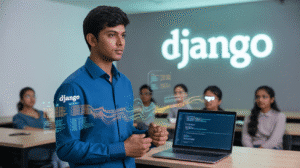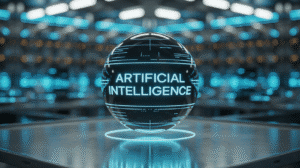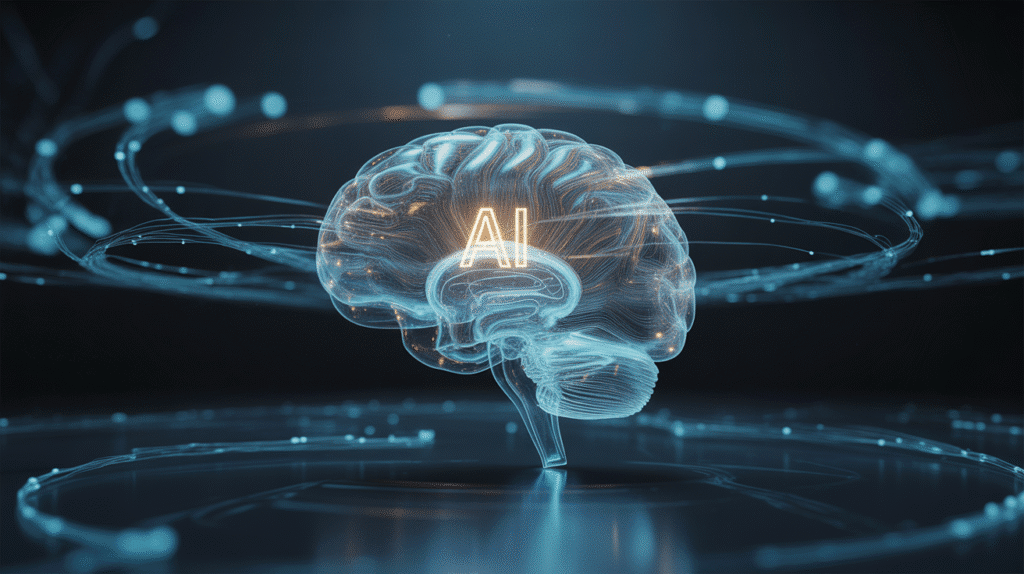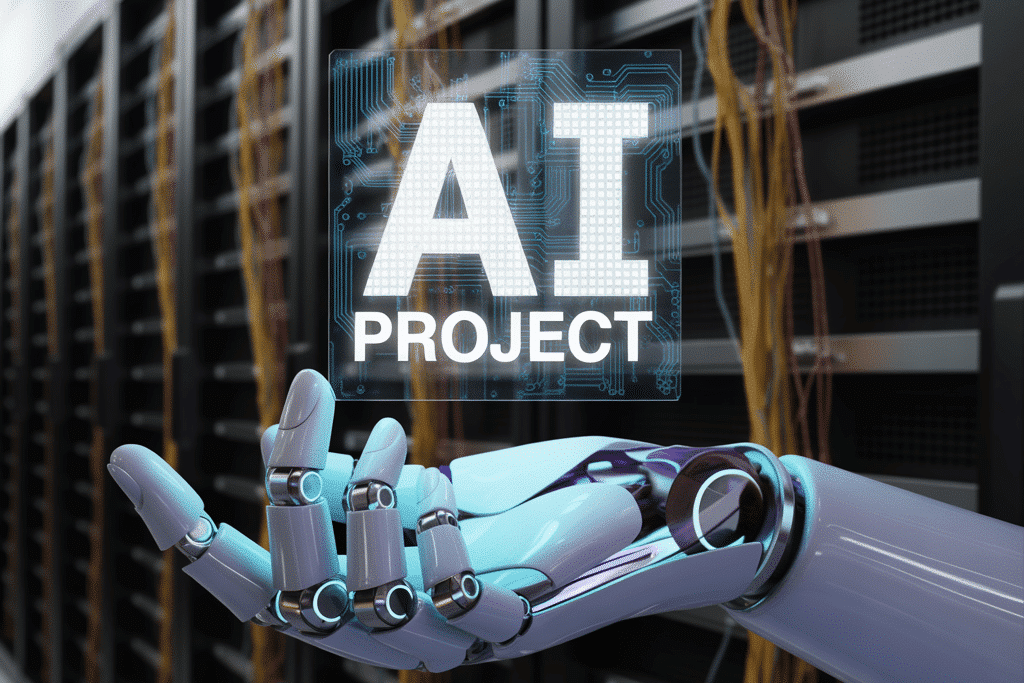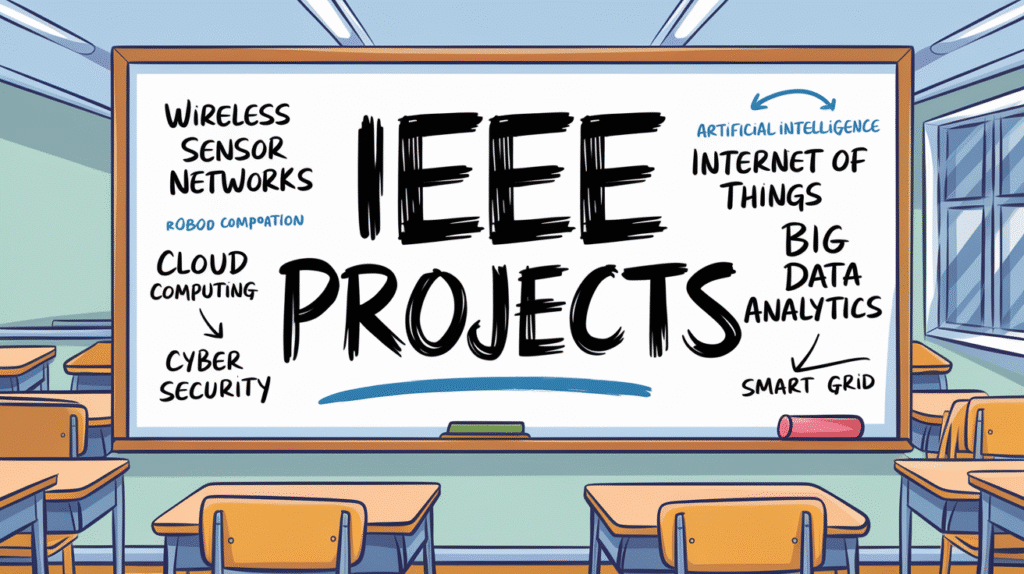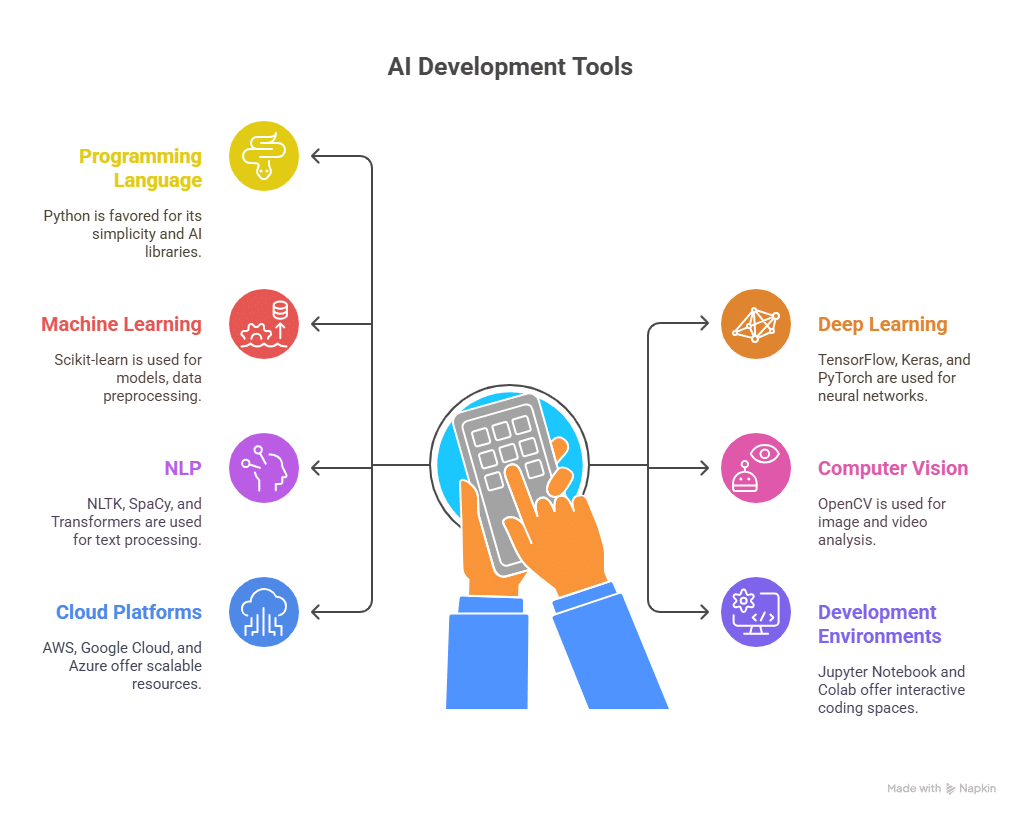
Top Mobile Computing Projects for Final Year Students in 2025
The journey of computing has been one of continuous miniaturization and increased reach. Mobile computing represents the pinnacle of this evolution, transitioning from bulky communication devices to the sleek, indispensable smartphones and tablets of today. It is more than just portable technology; it is a paradigm shift that defines our digital world.
Mobile computing, at its core, refers to human-computer interaction where a user is expected to be transported with their device during normal usage, facilitating the transmission of data, voice, and video without a fixed physical link. This inherently ties it to real-time data sharing, seamless portability, and advanced communication technologies like 4G, 5G, and Wi-Fi. It grants the unprecedented flexibility of accessing and interacting with information anytime, anywhere.
This ubiquitous connectivity is fundamentally shaping major global industries. In healthcare, mobile apps enable remote patient monitoring and telemedicine, drastically improving accessibility and responsiveness. E-commerce thrives on mobile shopping experiences, leveraging location services and personalized recommendations for massive commercial growth. Logistics uses mobile computing for real-time fleet tracking and supply chain optimization, while education has been revolutionized by e-learning platforms and virtual classrooms. To excel in this rapidly evolving landscape, students must move beyond theory and engage with practical application.
This is where the significance of a robust Mobile Computing Project comes into play. It serves as the ultimate testbed for transforming theoretical knowledge into market-ready solutions. Choosing the right Mobile Computing Project is the first step toward a successful career. For students seeking a competitive edge, ClickMyProject is the one-stop destination, offering a curated library of innovative, readymade, and customizable Mobile Computing Project solutions. We aim to equip the next generation of developers and researchers with high-quality projects to ensure academic and professional success.
The Fundamentals of Mobile Computing Systems
Mobile computing is a technology that allows users to access and process information and interact with remote services from any location using a portable device. It is a fusion of three fundamental components that work in harmony:
- Hardware: This includes the physical, portable devices like smartphones, tablets, smartwatches, and laptops. They are equipped with powerful processors, advanced sensors (GPS, accelerometer, gyroscope), and sufficient memory.
- Software: This encompasses the operating systems (like Android and iOS) and the mobile applications (apps) that run on them, providing the user interface and functionality.
- Communication: This is the backbone, comprising the wireless infrastructure and protocols that enable data transmission, such as Wi-Fi, Bluetooth, and cellular networks (3G, 4G, 5G).
The underlying technologies powering this ecosystem are vast. Wireless Networks provide the necessary connectivity. Sensors embedded in devices capture real-world data, enabling context-aware applications. Cloud Computing provides the massive backend infrastructure for data storage, processing, and application hosting, overcoming the limited resources of a mobile device. Finally, IoT (Internet of Things) Integration extends mobile computing’s reach by allowing smartphones to control and communicate with countless connected devices, from smart thermostats to industrial sensors.
The advantages of mobile computing are unparalleled: Portability grants freedom from a fixed workspace; Connectivity ensures constant access to information and collaboration tools; and Real-Time Data Access provides immediate information flow, which is crucial for decision-making.
In daily life, mobile computing applications are indispensable: Ride-sharing apps use GPS and real-time data to connect passengers and drivers; Mobile Banking provides secure, instant access to financial services; and GPS Navigation offers turn-by-turn directions, utilizing continuous data updates from satellites and local network information.

Importance of Mobile Computing Projects for Students
For students of computer science and engineering, embarking on a Mobile Computing Project is arguably one of the most critical steps in their academic journey. These projects bridge the crucial gap between classroom theory—such as network protocols and operating system principles—and real-world practice.
Working on a significant Mobile Computing Project actively enhances technical knowledge by requiring proficiency in programming languages like Java, Kotlin, or Swift, database management, and API integration. More importantly, it dramatically boosts problem-solving and innovation skills. Students are tasked with addressing practical challenges like battery optimization, handling intermittent network connectivity, and ensuring data security in a portable environment. This process cultivates the innovative mindset required to develop novel mobile computing project ideas.
Furthermore, successful completion of rigorous Mobile Computing Projects directly prepares students for high-demand careers. Whether in app development, where a portfolio of working applications is essential, networking, by understanding wireless communication complexities, or embedded systems, through integrating sensors and IoT devices, the practical experience is invaluable. A final-year Mobile Computing Project is often the centerpiece of a student’s resume. It strengthens their portfolio, showcasing technical skills and domain expertise, thereby significantly increasing employability and standing out to recruiters. Secondary exposure to mobile computing research projects further sharpens analytical and documentation skills, preparing students for advanced study and R&D roles.
Latest Trends in Mobile Computing
The field of mobile computing is in a state of perpetual acceleration, driven by several revolutionary trends that students must master to remain relevant.
The most profound recent development is the widespread adoption of 5G technology. This next generation of cellular network promises ultra-low latency, multi-gigabit speeds, and massive device connectivity, making applications like mobile augmented reality (AR) and real-time video collaboration seamless. Parallel to this, Edge Computing is gaining traction. By processing data closer to the user—at the ‘edge’ of the network—it dramatically reduces latency, a critical factor for sensitive applications like autonomous vehicles and industrial IoT. This shift is closely tied to Cloud Integration, where the mobile-edge-cloud continuum is now the standard architecture for high-performance applications.
AI and ML Integration are transforming the user experience. Artificial Intelligence is utilized for hyper-personalized content feeds, predictive text, on-device image processing, and intelligent power management. Machine Learning models are being deployed at the device level, enabling smartphones to become proactive personal assistants that learn and anticipate user needs.
Security remains a paramount concern. Security enhancements are focusing on more robust methods, including advanced biometrics (such as voice and iris scanning beyond simple fingerprint), and sophisticated data encryption techniques to protect sensitive information both in transit and at rest. Developing a Latest Mobile Computing Projects 2025 based on a secure mobile wallet or an AI-driven fraud detection system would be highly valuable in this environment.
ClickMyProject is committed to providing the most updated project solutions, such as those focusing on 5G network slicing and secure edge-based AI processing. Our catalog includes Latest Mobile Computing Projects 2025 that are meticulously aligned with these industry standards, ensuring students work on technology that employers are actively seeking.
Top Mobile Computing Project Ideas for Final Year Students
Choosing a final-year project requires balancing technical ambition with feasibility. The best Mobile Computing Project Ideas combine current trends with real-world utility, making them excellent portfolio additions.
A. Android-Based Mobile Computing Projects
Android remains the most dominant mobile operating system, making it a powerful platform for project development.
- Mobile Health Monitoring System: An app that connects via Bluetooth to a wearable device (simulated or real) to track vital signs (heart rate, blood oxygen) and upload the data securely to a server. It features alert notifications for critical deviations.
- Smart Attendance Tracking App using GPS: A location-based Android application that uses Geofencing and GPS to automatically mark a student’s or employee’s attendance only when they are within the designated physical premises. This eliminates manual errors and proxy attendance.
- Mobile Payment Security System using Biometric Verification: A financial app prototype that integrates multiple biometric authentication methods (e.g., fingerprint, face unlock) for every transaction, enhancing security beyond simple PINs.
B. Cloud and IoT-Enabled Mobile Computing Projects
These projects leverage the power of distributed computing and ubiquitous connectivity.
- Cloud-Integrated Mobile Data Storage Manager: A cross-platform app that provides a unified interface to manage files across multiple cloud services (like Google Drive, Dropbox, OneDrive) and includes client-side encryption before uploading, thus enhancing privacy.
- Smart Home Control via Mobile Devices: An IoT project where a mobile app sends commands (via a cloud or local gateway) to control home appliances, such as adjusting lighting, locking doors, and monitoring surveillance feeds.
- IoT-based Vehicle Tracking and Control System: A system that uses a mobile application to display the real-time location of a vehicle (via a GPS/GSM module) and allows for remote functions like engine immobilization in case of theft.
C. Real-Time and Data-Driven Mobile Computing Projects
These focus on low-latency data exchange and quick decision-making.
- Traffic Congestion Management App: A real-time system that aggregates location data from users’ devices (anonymously) to provide live, highly localized traffic information, suggesting optimal alternate routes and coordinating with smart traffic signals.
- Real-time Language Translation Tool: A mobile application that uses on-device machine learning for near-instantaneous speech-to-speech or text-to-text translation, crucial for travelers and global business.
- Mobile AI Chatbot Assistant for Customer Support: Development of a conversational mobile app using a Natural Language Processing (NLP) framework to provide 24/7 automated support, featuring deep learning to understand complex user queries.
D. Research-Oriented Projects in Mobile Computing
These projects delve into advanced theoretical concepts and emerging technologies, often leading to publications and patents.
- AI-based Predictive Mobile Computing Model: Developing a machine learning model integrated into a mobile OS to predict application usage patterns and dynamically adjust resource allocation (like CPU and memory) to maximize battery life and performance.
- Blockchain-based Mobile Data Protection System: A decentralized application (DApp) that uses a private or permissioned blockchain ledger to securely log and verify access to sensitive data on a mobile device, offering an immutable audit trail.
- Energy-efficient Mobile Computing Framework for Edge Devices: Designing and implementing a lightweight task offloading framework that intelligently decides whether to compute a task locally or offload it to a nearby edge server to conserve the mobile device’s energy.
How to Choose the Right Mobile Computing Project
Selecting the ideal project is a strategic process that can define a student’s academic standing and career path. Here is a step-by-step guide on how students can select projects based on their domain interests.
- Identify Core Interests (Domain Selection): Start by determining your passion. Are you interested in data security (e.g., Biometrics)? Wireless communication (e.g., 5G/IoT)? Or UI/UX and pure application development (e.g., Android/iOS)? The chosen project should motivate you.
- Evaluate Skill Set (Feasibility Check): Assess your current technical proficiency. A complex machine learning project might be too ambitious if you are a beginner. Choose a project that challenges you but is still achievable within the timeframe.
- Consider the Technology Stack: Decide on the programming languages (Java, Python, Swift, Kotlin), frameworks (React Native, Flutter), and backend services (Firebase, AWS, Azure) you want to specialize in. A powerful project uses an in-demand Technology Stack.
- Factor in Complexity and Resources: For a quick win, a Mobile Computing Mini Project is suitable, while a final-year effort demands a more complex, novel solution. Check what resources (hardware, APIs, specialized software licenses) are required.
- Seek Guidance: A mentor can provide invaluable direction.
To simplify this process, ClickMyProject offers expert guidance. We help students navigate the vast landscape of Mobile Computing Topics for Students, matching their aspirations and academic requirements with a perfectly suitable project from our diverse catalog.

Advantages of Doing Mobile Computing Projects with ClickMyProject
ClickMyProject is fast becoming the preferred platform for final-year students for one simple reason: we offer a complete project ecosystem designed for guaranteed success. We remove the common hurdles students face, such as time constraints and technical ambiguity.
- Real-time Project Support: We don’t just hand over a project; we offer continuous support. Our engineers provide assistance as you develop, ensuring your understanding of every line of code.
- IEEE Paper-Based Projects: Our premium projects are often inspired by or directly derived from IEEE and other high-impact publication papers. This ensures your project is academically rigorous and aligns with cutting-edge Mobile Computing Research Projects.
- 24/7 Technical Assistance: Our dedicated technical team is available round-the-clock to resolve critical development issues, minimizing downtime and helping you meet strict academic deadlines.
- Source Code and Documentation Availability: Every project comes with a clean, fully commented source code and comprehensive documentation (including system design, module explanations, and future scope), which is essential for project submission.
- Customization and Bulk Options: We provide tailor-made solutions based on unique academic requirements and also offer efficient management for bulk project options for groups of students or entire colleges. We can also provide support for Mobile Computing Mini Projects.
- Guidance for Report Preparation: We provide comprehensive assistance in preparing professional-grade project reports, presentations, and viva-voce preparation.
Future Scope of Mobile Computing Projects
The future of mobile computing is not just about faster phones; it’s about seamless, intelligent integration into every facet of life. This expanding role translates into exciting career and research opportunities for students focusing on relevant Mobile Computing Project domains.
The convergence of mobile with other emerging technologies is key:
- AI (Artificial Intelligence): Mobile devices will become the primary endpoints for AI, running sophisticated models for personalized health, security, and real-time environment interaction.
- AR/VR (Augmented/Virtual Reality): Mobile devices are the current and future gateway to immersive experiences, from AR shopping to mobile-based VR training simulations, demanding expertise in graphics rendering and sensor fusion.
- Robotics: Mobile computing and 5G will enable remote control and real-time processing for industrial and consumer robotics, such as drones and smart factory machines.
Students who complete high-quality Mobile Computing Project work, especially those focused on AI, edge computing, and security, are primed for lucrative career opportunities as Mobile Developers, IoT Solutions Architects, Cloud Engineers, and Information Security Analysts.
ClickMyProject continuously updates its repository with projects based on these future technologies, ensuring our students are not just learning the present but pioneering the future of mobile technology.

FAQs
1. What are the best Mobile Computing Projects for final year students?
The best projects include Android app development, IoT-based systems, and cloud-integrated solutions. These projects help you explore practical aspects of mobile communication, computation, and real-time problem-solving.
2. Why are Mobile Computing Projects important for engineering students?
They bridge theoretical learning with real-world applications. Working on mobile computing helps students understand network architecture, application design, and wireless protocols efficiently.
3. Does ClickMyProject provide Mobile Computing Mini Projects for beginners?
Yes, ClickMyProject offers a wide range of Mobile Computing Mini Projects suitable for beginners and diploma students. Each project includes documentation, demo support, and coding assistance.
4. Can I get customized Mobile Computing Project ideas from ClickMyProject?
Absolutely! ClickMyProject provides tailor-made project ideas and development assistance based on the student’s requirements and academic goals.
5. Are the latest Mobile Computing Projects for 2025 available at ClickMyProject?
Yes, ClickMyProject regularly updates its collection with the latest mobile computing projects 2025, ensuring students gain exposure to current industry demands and trends.
Conclusion
Mobile computing has transitioned from a niche field to the single most pervasive technology on the planet. For engineering students, proficiency in this domain is no longer optional—it is a mandatory ticket to a successful career. Choosing an innovative Mobile Computing Project is the most effective way to gain practical experience, hone your technical abilities, and secure a significant competitive advantage.
The career potential and learning benefits for students who master mobile computing, particularly in areas intersecting with AI, IoT, and high-speed networks, are immense. By undertaking a well-structured Mobile Computing Project, students gain tangible, demonstrable skills that translate directly into high-demand job roles.
ClickMyProject stands as the definitive platform for final-year students, offering access to innovative Mobile Computing Projects complete with expert guidance, fully functional source code, and comprehensive documentation. We provide the structure and support necessary to transform academic requirements into professional achievements. Don’t let your final year project be an obstacle; make it your greatest asset.
Explore the latest Mobile Computing Project ideas today and kickstart your academic and professional success with ClickMyProject!






